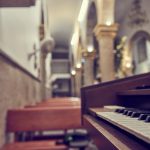The CSSHBO provides details on the air quality of its establishments
The CSSHBO provides details on the air quality of its establishments
The general management of the Centre de services scolaire des Hauts-Bois-de-l’Outaouais (CSSHBO) provided clarification regarding ventilation in its schools. To calculate the rate of pollution in the air and more generally in the environment, the measure used is the ppm “part per million”. The overall average of the measurements is 955 and the maximum desired concentration is 1000 ppm. At the provincial level, the Minister of Education Jean-François Roberge indicated that 1,369 classes had been tested in 330 schools. The average level of CO2 detected during these analyzes was 804 ppm, a result that the government considers satisfactory. So the lower the ppm rate, the better the air quality.
For the CSSHBO, at the request of the ministry, four (4) pavilions were tested in December with the following results:
• Sieur-de-Coulonge: between 680 ppm and 770 ppm (mechanically ventilated);
• Pavillon Poupore: between 970 ppm and 2020 ppm (naturally ventilated);
• Center Notre-Dame-du-Désert: between 725 ppm and 830 ppm (naturally ventilated);
• Vallée-de-la-Gatineau vocational training center: between 515 ppm and 815 ppm (naturally ventilated).
The CSSHBO stated that corrective measures are being put in place immediately for the Poupore pavilion. “At the Poupore pavilion, with more than 2000 ppm, the Directive on natural ventilation of buildings RM-99-99-01 of the School Services Center is applied. As required by the ministry, readings will be done again within a week in this pavilion, ”said CSSHBO.
Here are the ministry’s measures for naturally ventilated buildings that could apply to the Poupore pavilion:
• Strengthen the application of window opening protocols;
• Set up a process for verifying that windows are open;
• Increase the frequency and duration of window openings;
• Take advantage of the periods between the teaching periods to open the windows and doors;
• Keep at least one window open or ajar during class, if possible.
The CSSHBO clarified that there will be no air purifier that will be used. “Based on studies, what the ministry tells us about air purifiers is that it is not recommended to use these mobile filtration devices in schools for the following reasons:
• Their efficacy, not yet demonstrated to counter the transmission of diseases by aerosols;
• Their reduced efficiency in a large room (eg: classroom where sources of infectious particles are dispersed or far from the device);
• Risk of inappropriate use (possible generation of air flow carrying aerosols);
• Noise they produce that could interfere with concentration;
• Installing such equipment can also generate a false sense of security ”underlines the CSSHBO.
“At the Centre de services scolaire des Hauts-Bois-de-l’Outaouais, our heating and ventilation systems are in good condition,” said the CSSHBO in a press release. “Checks are carried out on an ongoing basis. As soon as a problem arises in one of our schools, the Material Resources Service is dispatched to the scene. Repairs are then carried out as efficiently and as quickly as possible. Our priority is the comfort and safety of students and staff ”explained the CSSHBO.
At the request of the Government of Quebec, all schools in the province must be tested by the end of the school year, an exercise that was to begin shortly according to the CSSHBO.



